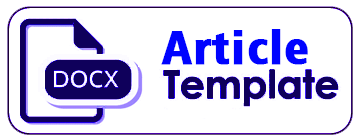UPAYA MENGUBAH POLA PIKIR DAN PERILAKU MASYARAKAT DUKUH KAUM DENGAN BANK SAMPAH
DOI:
https://doi.org/10.32497/ab.v20i2.1651Keywords:
Dukuh Kaum, Garbage Bank, Plastic WasteAbstract
Dukuh Kaum, Jabungan, is one of the areas located in Banyumanik, Semarang City. As the fifth largest city in Indonesia, Semarang which incidentally as the capital city of Central Java Province developed into a metropolitan city. The development of Semarang City into a metropolitan city does not guarantee equal distribution of development in all aspects of the life of the people of Semarang. This can be seen from the environmental conditions in the Dukuh Kaum area, Jabungan which are categorized as slums. Therefore the RUTE RESIK Program offers solutions to existing problems. The solutions offered are: The establishment of a Garbage Bank. The Garbage Bank is present as an effort to eliminate the bad habits of the Dukuh Kaum community, Jabungan in managing waste, especially plastic waste. The establishment of the garbage bank program was aimed at the PKK Dukuh Kaum Group. The stages of the activity in forming a garbage bank group are finalizing and establishing a waste bank, a waste sorting workshop for the Dukuh Kaum Community, implementing and mentoring garbage bank programs, as well as evaluating. The Garbage Bank Group in Dukuh Kaum, Jabungan has been formed and was inaugurated on April 21, 2019 with the name of the Rute Resik Jabungan Garbage Bank. In accordance with the agreement with the residents, the implementation of garbage bank activities is carried out once every month as well as taking savings money every three months. The initial activity of the garbage bank was held on May 12, 2019 with the first number of customers as many as 19 people.Downloads
Published
2019-12-07
Issue
Section
Articles
License
The copyright of the received article shall be assigned to the journal as the publisher of the journal. The intended copyright includes the right to publish the article in various forms (including reprints). The journal maintains the publishing rights to the published articles.

This work is licensed under a Creative Commons Attribution 4.0 International License.





